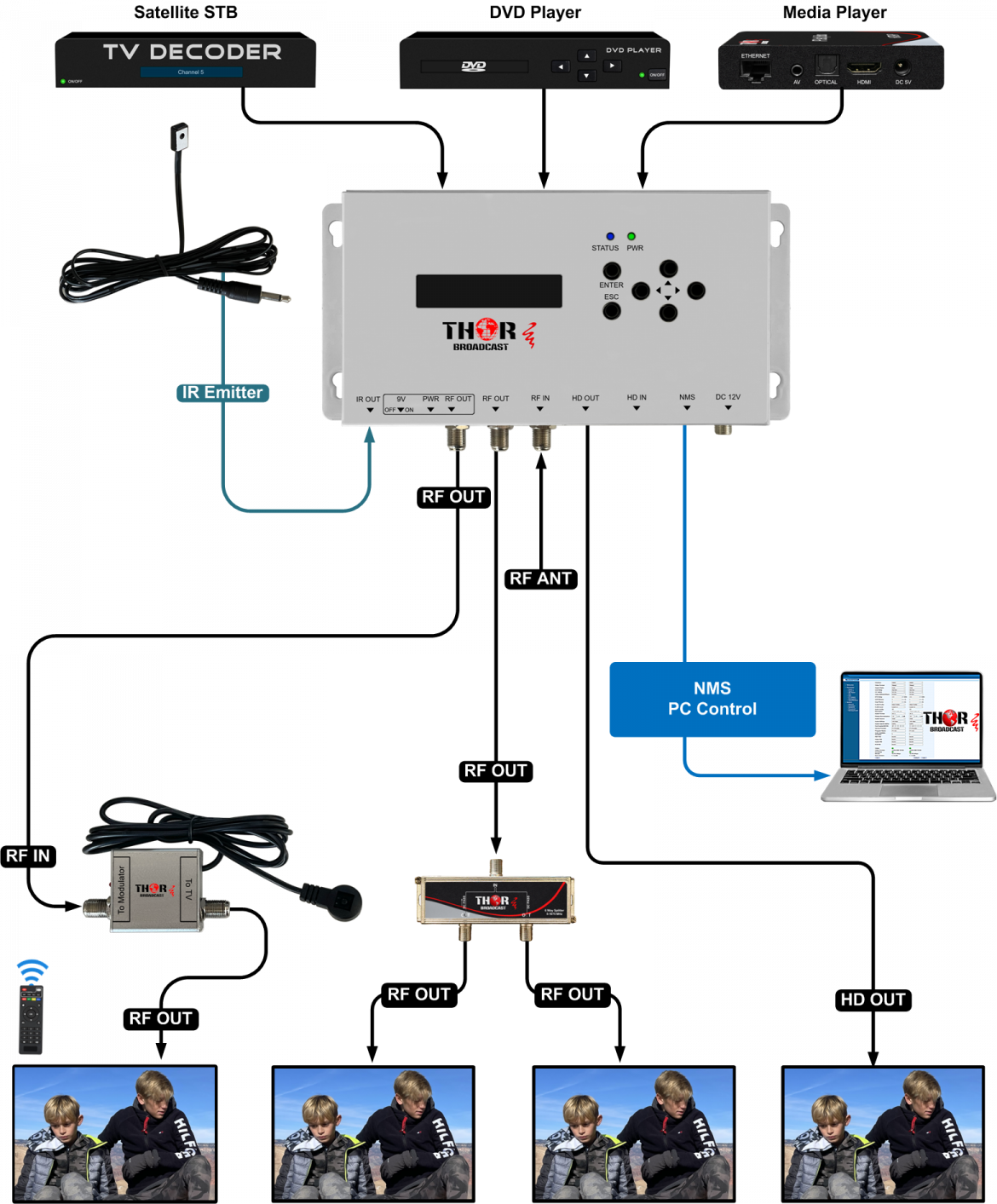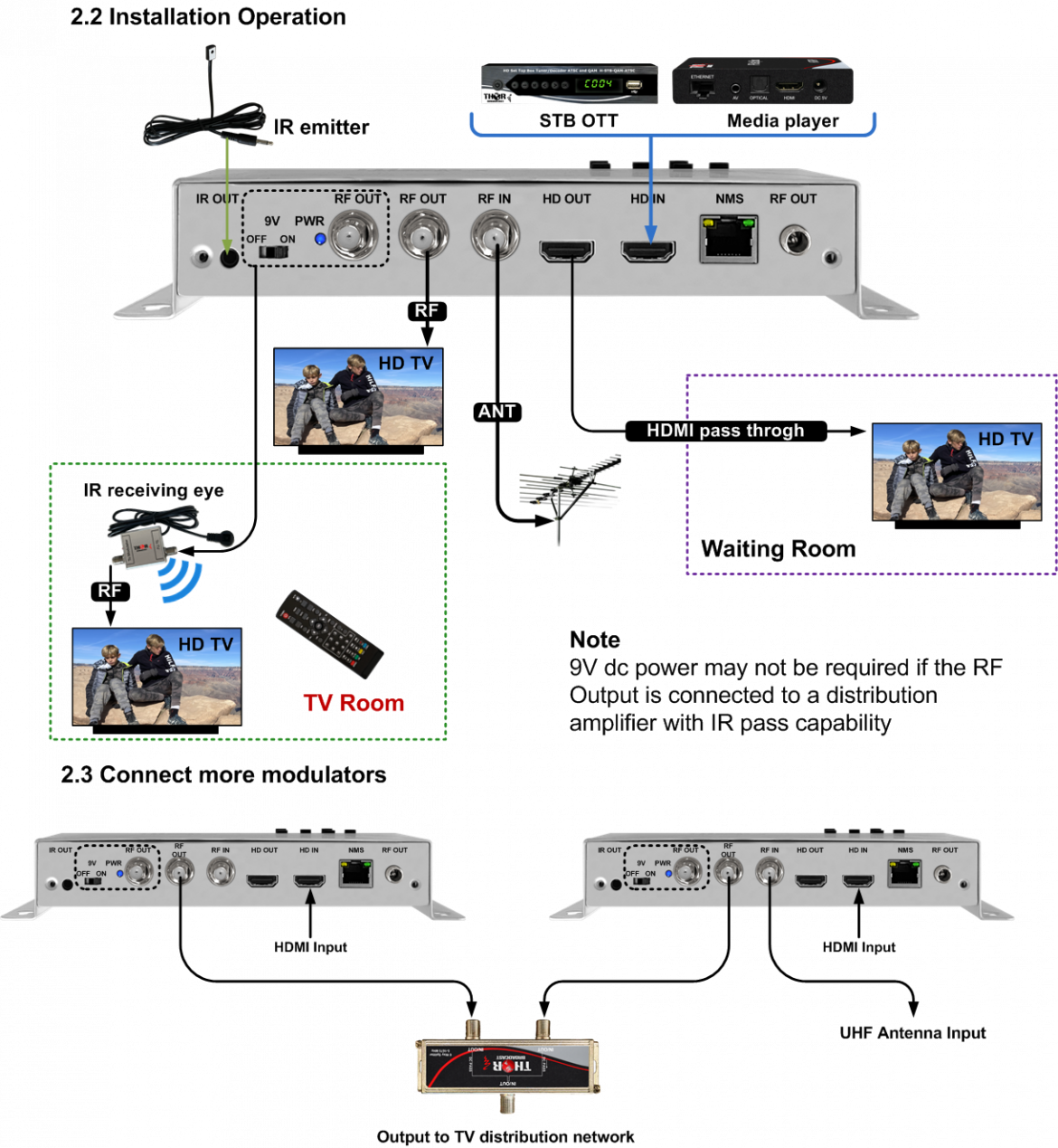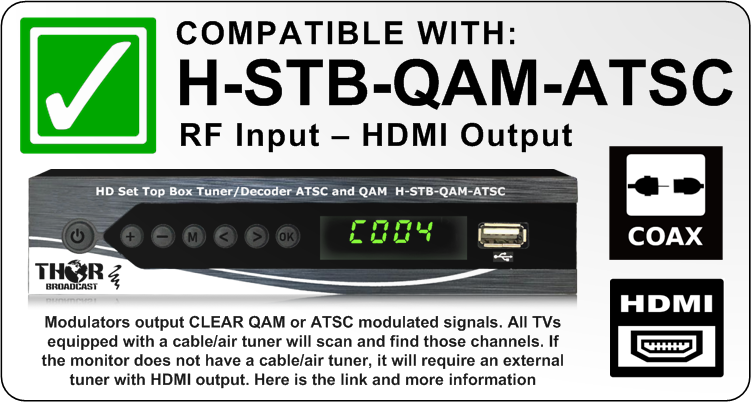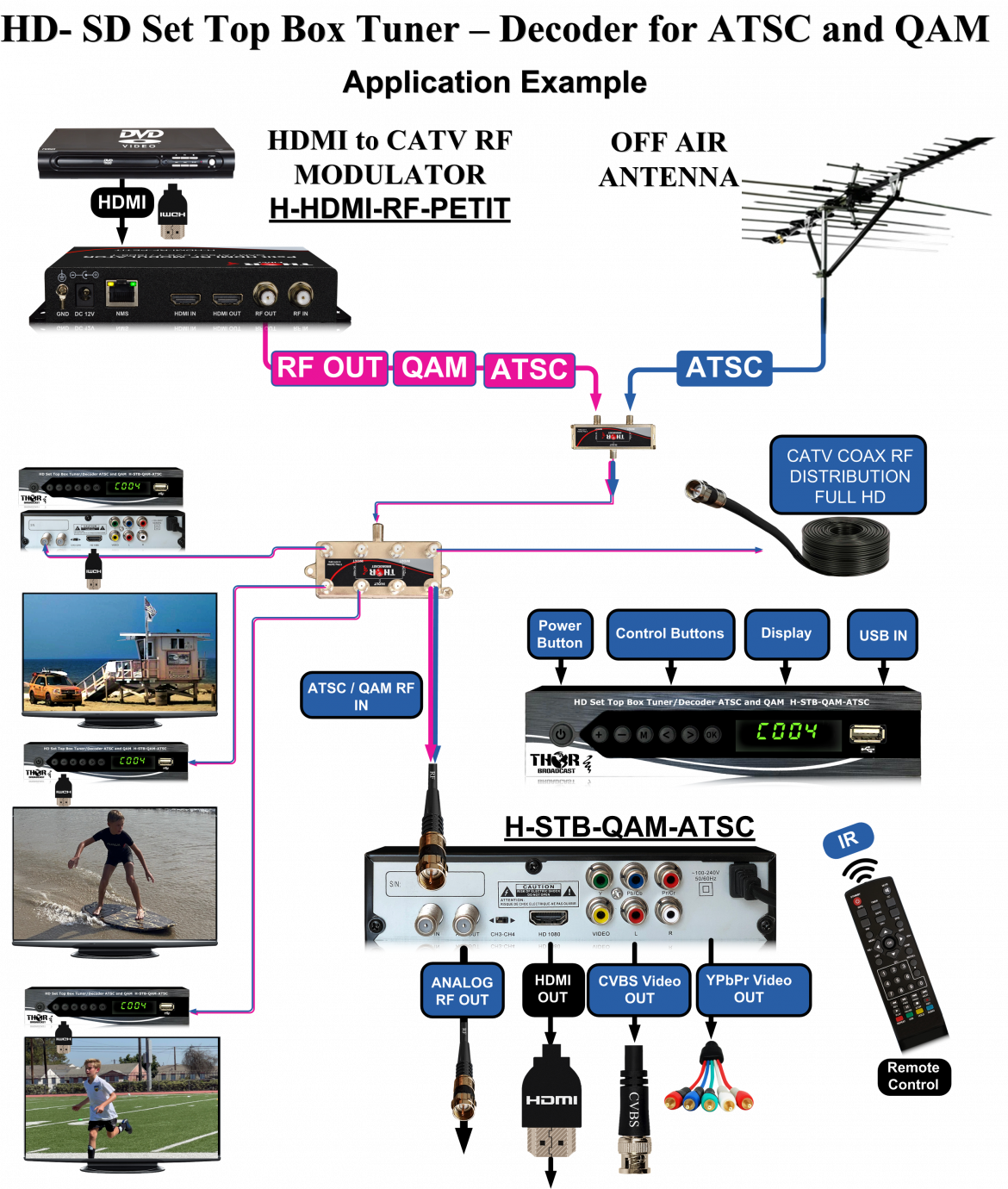| Encoding Section-Video |
| Encoding |
MPEG2 |
| Interface |
HDMI x 2 (1×input/1×loop out) |
| Resolution |
Input: 720@50p,720@60p
1080@50I/P,1080@60I/P
Output: up to 1080p30 |
| Bit rate |
5-25Mbps |
| Encoding Section-Audio |
| Encoding |
MPEG-1 Layer2, AAC, AC3 |
| Sample rate |
48KHz |
| System |
| Management |
LCD + Control buttons/Ethernet Web GUI |
| Modulation |
| MER |
Typ. 35dB |
| RF range |
50~950MHz, 1KHz step |
| RF output level |
100dBμV (30dB attenuation) |
| Standard |
ATSC |
| Constellation |
8VSB |
| Standard |
QAM J.83B, annex A , DVB-T, ISDB-T |
| Constellation |
64QAM, 128QAM, 256QAM |
| IR return path connections |
| RF output |
2 RF outputs (one providing accessory
power supply 9 Volts DC for IR pass) |
| DC switch |
Power supply 9 Volts DC for IR pass |
| IR OUT |
IR emitter output |
| General |
| Power supply |
DC 12V 1A |
| Dimensions |
225*105*41mm |
| Weight |
680g |
CATV RF Modulation Technologies: A Comprehensive Overview of Standards and Distribution
Introduction:
Cable Television (CATV) distribution relies on advanced Radio Frequency (RF) modulation technologies to deliver a multitude of channels seamlessly over coaxial networks. The modulation standards vary across countries, contributing to the diversity of CATV technologies worldwide. This article delves into the distinctions between modulation standards such as Off Air 8VSB ATSC, DVB-C Annex B, DVB-T, and ISDB-T, shedding light on their bandwidths, encoding formats, and the indispensable role of amplifiers in ensuring reliable signal distribution.
Modulation Standards Across Continents:
CATV RF distribution employs different modulation standards in various regions. In the United States, Mexico, Canada, and some Latin American countries, Off Air 8VSB ATSC is a prevalent standard. Its bandwidth, with a data rate of 19.3 Mbps, allows for high-quality signal transmission. Conversely, DVB-C Annex B is utilized in the US, Canada, and Mexico, with QAM 256 providing a robust 38 Mbps data rate, and QAM 64 delivering 27 Mbps.
In Europe, the Middle East, and Africa, DVB-T is the standard of choice. This standard accommodates different bandwidths, providing a flexible solution for diverse broadcasting needs. Meanwhile, Japan and countries like Chile and Argentina leverage ISDB-T, showcasing the adaptability of CATV technologies to regional preferences.
Encoding Formats and Compression Techniques:
The encoding formats play a pivotal role in determining the efficiency of signal transmission. In the United States, Mexico, and Canada, MPEG2 is commonly used, while H.264 is favored in other countries. These formats facilitate the compression of audio and video data, ensuring efficient utilization of available bandwidth.
Diversity in Audio Codecs:
CATV RF modulation technologies also exhibit diversity in audio codecs. Dolby AC3, MPEG2, and MPEG1 audio compression are commonly employed, each offering distinct advantages in terms of audio quality and bandwidth utilization. The choice of audio codec often depends on regional preferences and technological considerations.
Distribution Over Coaxial Networks:
Distributing multichannel content over coaxial networks is remarkably streamlined. Coaxial networks refer to the interconnected system of coaxial cables, splitters, taps, and combiners that facilitate the distribution of signals to individual households. Coaxial splitters divide the incoming signal into multiple paths, ensuring each subscriber receives their desired channels without signal degradation.
Coaxial Network Components:
Coaxial splitters, taps, combiners, and RF amplifiers are essential components of CATV distribution networks. Splitters divide the signal into multiple paths, taps allow controlled signal extraction, and combiners merge signals from different sources. RF amplifiers play a crucial role in overcoming signal attenuation and insertion loss, ensuring that the signal remains strong throughout the distribution network.
Understanding RF Amplifiers:
RF amplifiers are integral to CATV distribution networks. They boost the signal strength, compensating for losses incurred during transmission. RF insertion loss, resulting from cable attenuation and passive components like splitters and combiners, is effectively counteracted by strategically placed amplifiers along the distribution network.
Conclusion:
CATV RF modulation technologies form a sophisticated tapestry of standards and technologies, adapting to the unique requirements of different regions. Understanding the nuances of modulation standards, encoding formats, and distribution components is crucial for ensuring efficient and reliable CATV signal distribution over coaxial networks worldwide. As technology continues to evolve, CATV systems will likely witness further advancements, enhancing the quality and diversity of content delivered to viewers across the globe.

 ES
ES





















